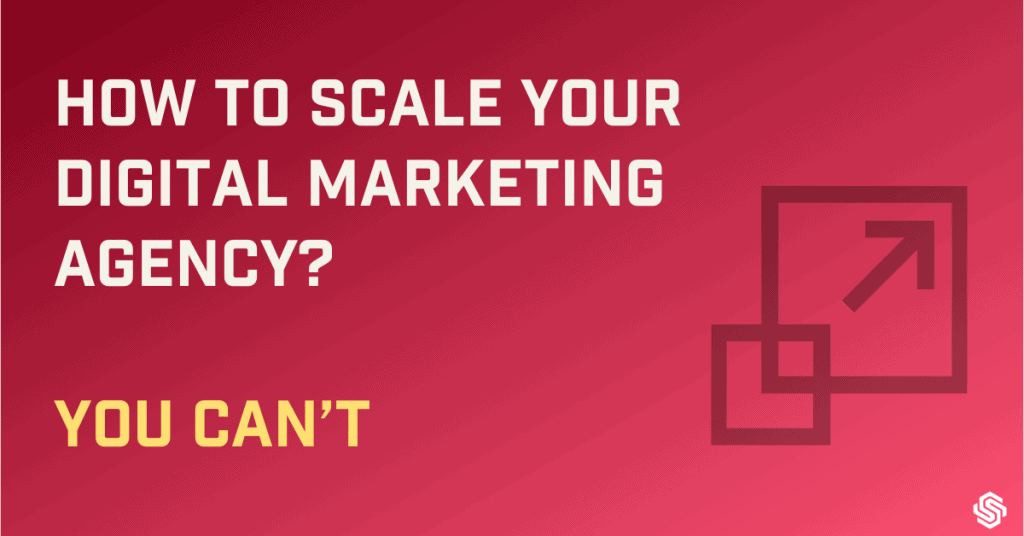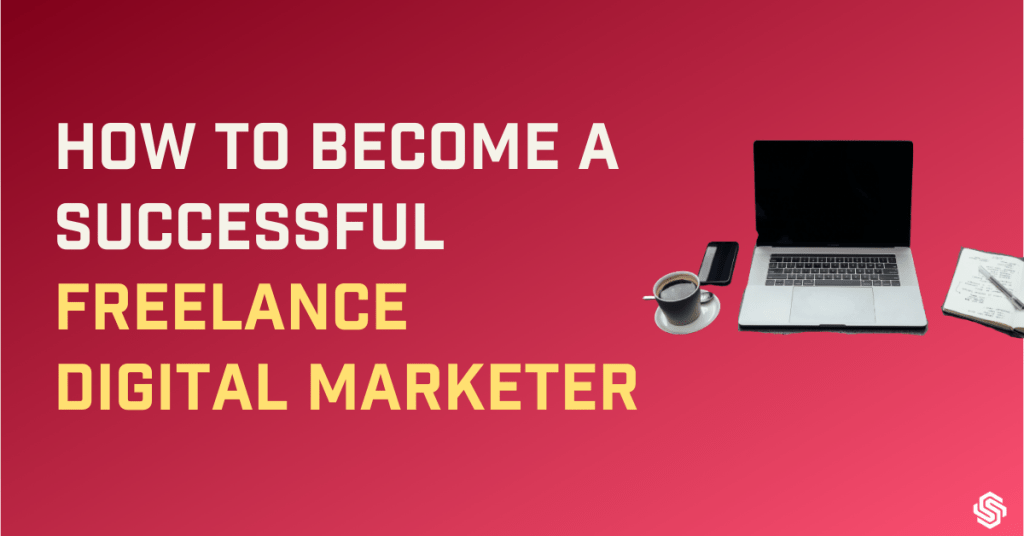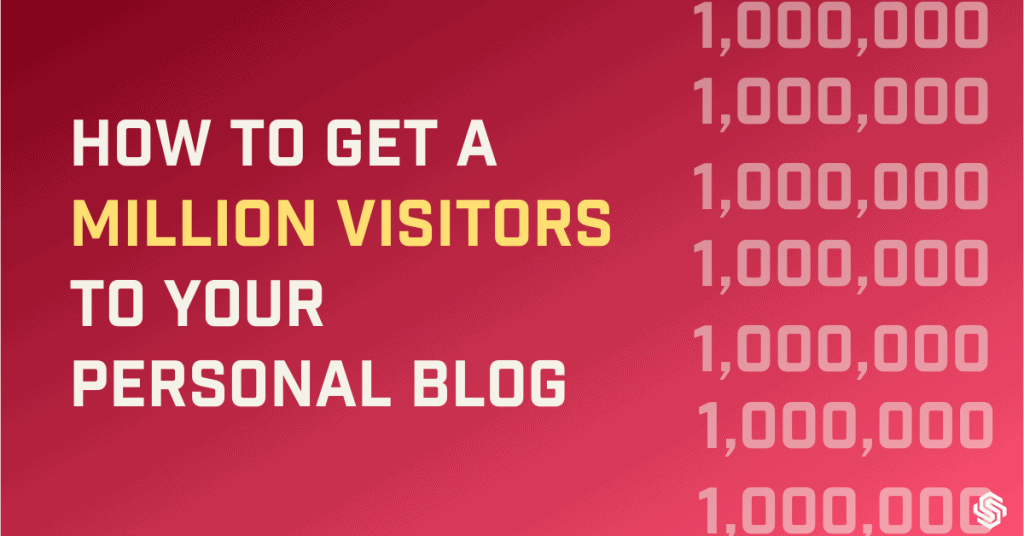Hold your horses.
Before you jump at me with your idealistic pitchforks, allow me to explain myself.
I have noticed a pattern in the way most digital marketers operate.
They educate themselves about digital marketing for quite some time, and are presented with two options; get a job or go on their own.
A lot of people take a job as it gives them the stability that they are looking for. It also allows them to learn, usually at somebody else’s expense.
The other option is to start something on your own and use your digital marketing skills.
The problem with starting something on your own is that you either need to invest money or time. A lot of people can’t invest either—mainly because although they have time, they don’t have the money. In fact, they can’t invest time either because they don’t have enough money to sustain themselves for a long period.
So they take the next logical step—servicing clients.
Servicing clients is great because it gives you the advantage of a job, which brings predictable income and also gives you great potential to grow—and all this on your own terms.
Before you know it, you have more clients than you can handle, so you start hiring more people. Now that you have more people, you feel the pressure to keep the cheques coming in every month to pay the salaries; so you take on more clients.
And the cycle continues.
That’s when you notice something out of place. Most of the money you are making is going into taking care of the operations, salaries, and other expenses. Whatever is left needs to be saved for a rainy day, leaving very little for the agency owner himself.
That’s when the startling revelation hits you—you are not running a business; you are self-employed with a terrible salary and almost no vacation.
This happens because a lot of people think when they scale the agency, they can make a lot more money than they are now, only to realize that it might not be the case. Why?
Simple, you can’t scale an agency.
You can definitely grow it, but you can’t scale it.
Because although you can increase your revenue, you need to increase your expenses too to keep the business running. This is growth and not scaling.
To understand why this is not scaling, we need to understand what scaling is.
What is Scaling?

In simple terms, you have a scalable business when you can increase your revenue exponentially without a significant increase in expenses. In other words, you are able to increase the output without changing the input.
For example, imagine you are making INR 10,00,000 in revenue from your business and your expenses are INR 5,00,000. Is it possible for you to increase your revenue to INR 20,00,000 (or even INR 30,00,000) without increasing your costs beyond Rs. 5,00,000?
Now you might be wondering whether there is any business model that can achieve this?
Yes, there are plenty.
The easiest ones are content (any kind of media, for example, our courses) and code (SaaS products like Ahrefs). Think about it: there is zero extra cost to replicate your product and service another customer if you have either the content or the code.
In my Content Marketing Mastery course, for example, the cost of producing the course is the same for me whether I sell it to 10 people or to 1,000 people. I have this advantage because I can replicate the product and sell it to unlimited people with minimal extra cost. At the same price, my revenue will be 100x if I sell it to 1,000 people instead of selling it to 10 people.
But why can’t you scale an agency?

Agencies sell a service, and in selling a service, you are basically selling time and expertise.
Unfortunately, your time is limited. Like everyone else, you get only 24 hours in a day. Now to sell more time, you need to buy more time in the form of employees. Therefore, with every increase in revenue, there is a consequent increase in expenses too.
Eventually, you will have so many people working for you that you need to start hiring people to manage these people. That’s an additional cost. Not to mention, people take up space and other resources too, which means more damage to the bottom line.
It’s not surprising that most agencies around the world operate at an 11-20% margin, according to a report by HubSpot.
Again, I wouldn’t take this as gospel and go with these numbers blindly. In the same report, 15% of the respondents have said they don’t even know what their profit margins are, so take these numbers with a pinch of salt.
But based on my experience, most agencies, even in India, have profit margins in the sub-20% range.
Also, what I have experienced and noticed is that it is very difficult to maintain a balance between revenue and expenses. It’s not very easy to get to the profit margin we are talking about.
The biggest problem is clients not paying on time. Just one client not paying what they owe you can completely throw you off. Not just that—you will have to spend unnecessary energy running behind them to get the money.
The other problem is you could have one or many of your clients stop working with you altogether. Now that your revenue is constrained, it will become difficult for you to cover the expenses since you still have to pay the salaries and other liabilities.
The opposite can also be a massive problem. Assuming that you are providing a fantastic service and have a good brand out there, you will definitely attract more work than you can handle.
As an entrepreneur, it becomes challenging to say no to new customers.
But this can be equally devastating. When you take on work that you may not be able to service, it can definitely hurt your brand in the long run.
But does that mean you shouldn’t set up an agency considering the nature of the business it is in? Not at all.
At the end of the day, an agency is in the services business and India’s economy lies on the bedrock of service company giants like TCS and Infosys. Even today, India has the advantage of having access to great resources at low cost. You can most definitely grow your agency the way these companies have grown. Besides, a 20% profit margin on, say, a revenue of Rs. 1,00,00,000 is not too bad in my opinion.
Like I mentioned earlier, very few agencies have been able to achieve this and getting there can be painful and extremely difficult.
So what then is the solution?
Productize your Agency.

Don’t worry; I am not talking about building a SaaS product.
Although that’s also a great way to pivot from a service company to a product company. But a SaaS product is usually DIY for the users. They still have to invest time and effort to learn and use the product.
But we are talking about a productized service, where it is done for your users—a very specific service that is intended to give a specific deliverable.
Let me explain with an example.
When I got into digital marketing about 10 years ago, I had unintentionally created a productized service. The offering was very simple:
“I would give you X number of backlinks for $Y”.
I had set up a landing page, mentioned what the offering was, and added a payment link. The buyer would pay for the “service”, and give me the URLs and keywords to begin the work.
I had put in place a system complete with tools and VAs, who would finish the task and deliver the order.
That’s it.
Notice how I didn’t say “I would rank for X keywords for $Y”. This is probably the best part of productizing your service.
Your focus is on the deliverable rather than on the result itself. Of course, most people who bought my productized service saw amazing results and would come back to buy more.
In fact, my repeat purchase rate was around 60%.
So in essence, from your customer’s perspective, a productized service is a service with a very specific scope, purpose, and price, focused on the deliverable rather than on the result.
From the agency’s perspective, a productized service is a process that continues to produce desired outcomes consistently, with or without you.
Why you should be productizing your agency?

1. Scalability
Like I mentioned earlier, with a customized solution for all your clients, you are more likely to sell time to your clients. So for you to make more money, you need to “hire” more time and resell it to your clients.
When you productize your service, when the input and the output are standardized, you can make more from the hired time than you would with customized solutions.
With customized solutions come customized problems. When you remove inefficiencies from the entire process, you can make the best use of your time and your employees’ time.
All of this means that you can exponentially increase your revenue without exponentially increasing your expenses.
Now, that’s scale.
2. Remove yourself
The biggest problem with traditional agencies, which I have personally faced, is that it’s very hard to remove yourself.
You find it so difficult to remove yourself from talking to new prospects, pitching to them, delivering the service to them, and above all managing all employees.
You end up being the employee of the month.
And that’s not a good thing.
When you have productized your service, your business’ dependency on you reduces dramatically. When everything is defined, all you need to do is, on a bad day, some crisis management.
That’s how you build a business; otherwise, it’s merely self-employment.
3. Asset
You create wealth by creating assets. An asset is anything that helps you make money, even when you are not involved. Since productizing can help you remove yourself, this can be a great asset to create wealth for you.
Any system or process can be an asset, especially when it’s helping you generate income. Not only can you scale it, but you can also exit it, by selling the business—of course, for a handsome amount.
A business model that has been streamlined so well that it requires minimal intervention from you makes it lucrative for potential investors or buyers. If you wish to, you can sell your agency at a generalized valuation of 5x your revenue.
4. Predictable, reliable, recurring income
Predictable
Reliable
Recurring
The holy trinity of revenue generation.
When you have recurring income, your income becomes predictable. And when it becomes predictable, it becomes reliable.
When you have a steady stream of income coming into your business, you can plan your expenses ahead. When you can plan your expenses ahead, you can predict the direction of your business better.
The chances of achieving this holy trinity are higher when you productize.
With a regular agency, the biggest problem is client payments. Although it gives you the illusion of predictability, anyone who has run an agency knows that it can’t be farther than the truth.
While productization can help you achieve the holy trinity, it allows you to do something even more powerful.
5. Get paid upfront
With a customized solution, the results of the work are unknown until you do the job. This unpredictability allows your client to force your hand into taking on the risk as an agency owner—deliver the work and then get paid. This is especially true for SEO agencies.
When you productize your solution, the output is defined along with the terms of the delivery. Your customers know what to expect.
This dramatically increases your customers’ trust and gives you the leverage to get paid upfront and then deliver the service.
No more running behind clients for payments.
Let that sink in for a moment.
Upsell customized service at a higher price
I know this sounds counterintuitive, but if you really want to sell customized solutions, it should come further down the funnel.
If you take the approach mentioned here, what you achieve is something called price anchoring.
You would have anchored the price of a standardized service to your client, which will help you charge a lot more for customized solutions.
Assuming that you would have already demonstrated the value you can deliver with the standardized service, it becomes so much easier to convince for a higher-priced customized solution.
The best part? You will have only high-quality, qualified leads that you will have to attend to. You can also make it exclusive, thereby bringing in the angle of scarcity to your clients, which will force them to sign up.
Again, you don’t have to do this, but if you wish to or if you get an inbound query, this might help you close high-ticket clients with ease.
6. Hiring and managing becomes a breeze
The biggest problem with scaling or growing is that you need more resources to execute specific tasks.
In a regular agency, team roles might not be well defined, which kind of forces you to throw the “hey-we-are-a-small-company-so-please-do-everything” at most of your employees.
This is not only demotivating to your employees but can also become extremely stressful for you as the owner of the agency.
When you productize, you standardize the process and the output. The roles are exceptionally well defined and also the parameters on which they will be reviewed.
This brings in a great deal of transparency and allows you to give unbiased feedback to your employees, which can be crucial.
All of this is great, but how do you go about it?
How to productize your agency?

1. Identify a very specific solution
The first step is to identify a very specific solution to a very specific problem. The tasks at hand should be hyper-focused so that you can create a scalable process.
It goes without saying that you should be extremely good and efficient at providing this solution.
Let’s try and productize a “Full-Service Digital Marketing Agency.”
Now, obviously, this looks like an agency that provides everything under the sun when it comes to digital marketing. If I were the owner, I would first try to find out what is that one task that my team and I can efficiently process.
Let’s assume that it’s content creation. Instead of being a full-service digital marketing agency, I would say I am a content creation agency.
Now, there still seems to be a little bit of ambiguity.
Let’s try to be more specific. How about content creation for your blogs? I won’t write white papers, no copy, no social media posts, just blog content.
Can you sense the clarity there? Your clients should now know what to expect from you and what not to.
Remember, this is something you are good at; you now have to figure out whether people would want this solution or not.
Here are a few great examples of specific solutions.
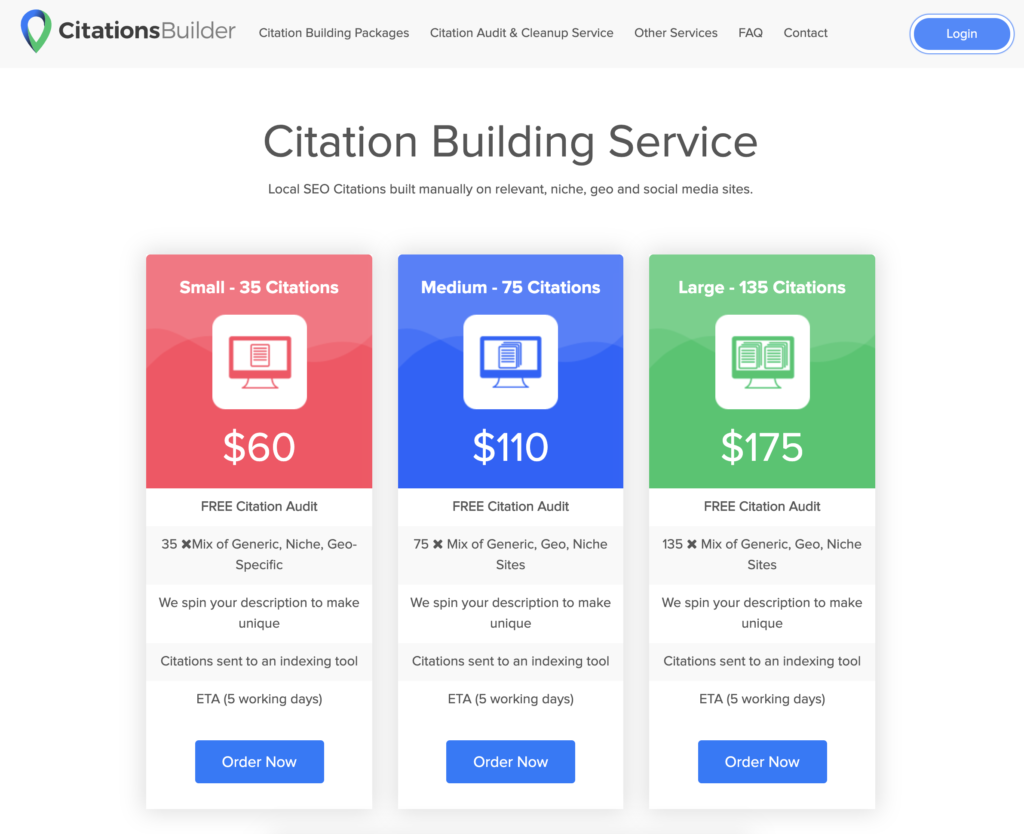
This is a great example of a productized agency. This agency based out of the UK provides only citation building service ( useful in Local SEO ) and nothing else.
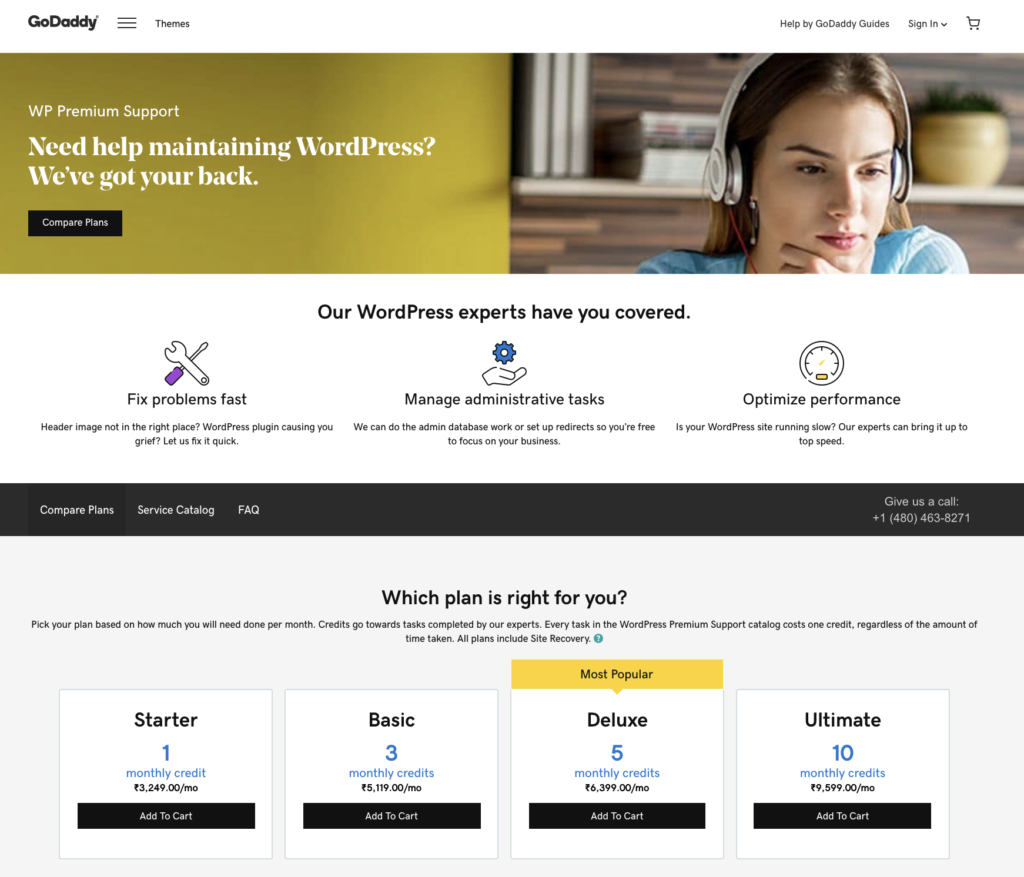
Heck, even GoDaddy has a productized service. The offering is simple, any WordPress problem will be taken care of for 1 credit, regardless of how long it is going to take. Notice how it’s also a subscription – win, win.
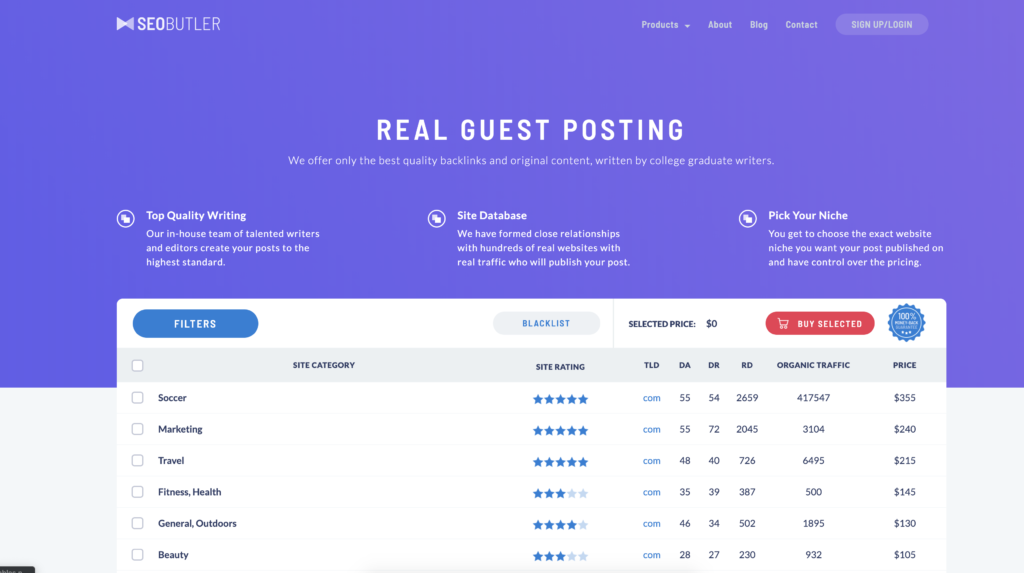
Another good example of productized services from SEO Butler. They have multiple “products” like this and for each offering, the deliverable is very clear.
2. Validate the solution (and the market for it)
The market never lies.
It hands the harsh truth right in your face with no bias. And that’s a good thing.
You need to validate that a large-enough market requires the solution that you have for you to build a sustainable business. When I say large enough, I mean enough number of people willing to pay enough money for it.
How do you figure this out?
Go the Minimum Viable Product (MVP) way
All you need to do is create a simple landing page that describes your product and how much it would cost them (preferably lower than usual). Spread it in your network and run some ads if necessary. See how many of these you can convert.
Remember, this is just to validate the market. You don’t have to go all fancy with anything. If you can’t validate it, there is nothing to worry; you can always come up with another solution.
If enough people buy your beta, that means that there is a need in the market. If you can’t service them right away, it’s fine. You can always refund them and tell them you will get back to them soon.
If you can service them, go ahead and win that client over.
3. Create an SOP to deliver the solution
Create an extremely detailed standard operating procedure (SOP) for the entire solution. The SOP is for the people who will be working on it. An SOP will greatly improve clarity and efficiency among people.
This is a very crucial element in the entire productization bit because every single client of yours should get consistent and similar value out of your productized service every single time.
If there is no SOP and your employees are supposed to figure things out on the fly, you might again end up being stuck in a rut of confusion.
4. Set terms for delivery
This is probably the most significant advantage of a productized service. You can quantify the value of the offering you have and communicate to your clients exactly what they are going to get.
The problem with a customized solution is that sometimes you are tied to the results of your input, which is entirely acceptable. But both you and I know how difficult it is to predict outcomes. There are too many factors involved, especially when it comes to things like SEO.
So while you are selling a productized solution, set the terms of delivery very clearly along with the turnaround time.
And then overdeliver.
5. Set the price
Most digital marketers get stuck with pricing, and with your productized service, it won’t be any different.
No matter how you look at it, the entire pricing can be broadly categorized as
Cost-based pricing
Value-based pricing
With cost-based pricing, you make a list of all the costs you will be incurring and then add a profit margin to it to arrive at the pricing. Simple.
But most costs related to a service can be vague. This is where value pricing comes into the picture.
With value-based pricing, you figure out what value your client will be getting from your services and put a price tag to it. If your services, even remotely, can increase the sales of a company by 2x, value your offering accordingly. But before you opt for value-based pricing, you need to figure out how to communicate this value and to do that, you need to ..
Set up a funnel
Whether you like it or not, your prospects go through an imaginary funnel.
It is your job to intentionally engineer their journey by communicating the right things at each stage so that they move on to the next stage of the funnel.
At each stage of the funnel, you need to build trust. You can do this by using content, producing social proof, discounting your service, and more.
Don’t expect the client to whip out their wallets the very first time they see your landing page. Everyone goes through the journey of your funnel and depending on how expensive your offering is and trustworthy you are, the time taken to complete this journey may vary.
Start feeding the funnel
It’s time you start feeding this funnel using the right marketing channels.
Don’t just go crazy on Facebook Ads and expect things to work out. Figure out where your prospects hang out and choose those channels accordingly.
In fact, you might want to figure this out before you set up a funnel. Depending on where they hang out, you might want to change your funnel.
For example, if most of your clients are offline, you can’t be running Facebook ads to feed you funnel. You need to figure out a way to attract these clients in an offline setup.
Conclusion
Running an agency can be really tough, but it’s oddly satisfying too. There are plenty of very successful digital marketing agencies out there that have managed to grow their agencies tremendously with nice fat profit margins.
I believe using this approach can improve your chances of getting there dramatically. If nothing, it will not only make your life slightly easier but also help you charge higher for customized solutions.
If you already have an agency that sells customized solutions, then you can place productized services on top of the funnel and qualify really high-quality clients.
In fact, I started my career in digital marketing by providing productized solutions on different forums. I have seen both sides of the coin, and I feel all agency owners need a break from all the chaos and have a smooth running agency.
In fact, I feel this approach can be applied to any service-based company. If you wish to jump in on this, you might also have the first-mover advantage since I don’t see a lot of people doing this.
What do you think of this approach?
List of Digital Marketing Agencies in Cities
Digital Marketing Agencies in Ahmedabad
Digital Marketing Agencies in Chennai
Digital Marketing Agencies in Delhi
Digital Marketing Agencies in Hyderabad
Digital Marketing Agencies in Jaipur
Digital Marketing Agencies in Kochi
Digital Marketing Agencies in Lucknow
Digital Marketing Agencies in Mumbai
Digital Marketing Agencies in Bangalore
Digital Marketing Companies in Pune
Digital Marketing Agencies in Chandigarh
Digital Marketing Agencies in Pune
Digital Marketing Agencies in Indore
Digital Marketing Agencies in Hyderabad
Digital Marketing Agencies in Kanpur
Digital Marketing Agencies in Nagpur
Digital Marketing Agencies in Kolkata
Digital Marketing Agencies in Ajmer
Digital Marketing Agencies in Surat
Digital Marketing Agencies in Bhopal
Digital Marketing Agencies in Coimbatore

